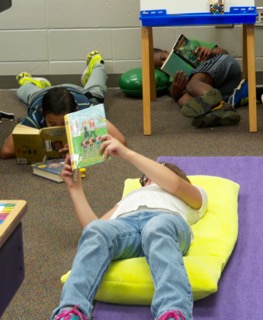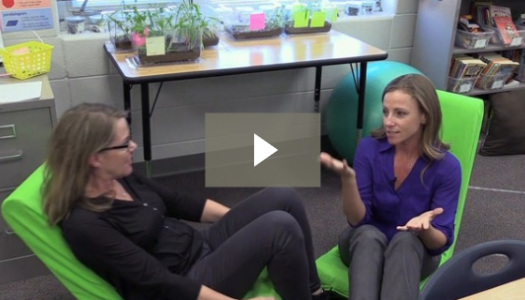Supporting Students with Staying in One Spot During Daily 5
Join Our Community
Access this resource now. Get up to three resources every month for free.
Choose from thousands of articles, lessons, guides, videos, and printables.
As we so often hear, sometimes the first step to supporting students with success in Daily 5 is helping them with staying in one spot. One might ask why staying in one spot is so important that it is the first behavior we teach when going through the 10 Steps of Independence. If we consider how students will become better readers and writers, we know they need to spend more time reading and writing, both of which are difficult to accomplish if one is moving about.
For some students, staying in one spot seems like an insurmountable task. We have drawn on our own experiences as well as those of colleagues around the world to give you ideas and suggestions for helping students engage in their reading and writing by staying in one spot.
- Even though it may seem counterintuitive, we teach children to choose their own places to work. We might believe it's more effective to tell them where to sit (and periodically we do) yet real success most often follows many class and individual conversations with lots of practice time to independently choose a good working area where they and others can be successful. Listen in on this video where Pam confers with one of her students who has a difficult time staying focused and in one place. You will hear a discussion about choosing where to sit to be successful. Choice is a vital component of students' success and can be instrumental to staying in one spot.
-
.jpg) It can be very helpful to provide a visual cue to remind students of the spot they chose to sit. We accomplish this in a number of ways. Because we make available different small movable rugs or square yards of fabric that can be moved anywhere in the room, children are able to place the rug or fabric where they can be successful, thus providing a definitive space to work. Another variation of this is to use a piece of plain white chalk to draw a circle or square on the floor, marking their spot to sit. Chalk is very effective, as it is easily vacuumed up. In classrooms with tile flooring, outlining a variety of taped-off locations around the room can also create different places of choice.
It can be very helpful to provide a visual cue to remind students of the spot they chose to sit. We accomplish this in a number of ways. Because we make available different small movable rugs or square yards of fabric that can be moved anywhere in the room, children are able to place the rug or fabric where they can be successful, thus providing a definitive space to work. Another variation of this is to use a piece of plain white chalk to draw a circle or square on the floor, marking their spot to sit. Chalk is very effective, as it is easily vacuumed up. In classrooms with tile flooring, outlining a variety of taped-off locations around the room can also create different places of choice.
- Often students who struggle to stay in one place are those who are physically not comfortable in a desk or chair at a table. Providing alternative seating options and teaching children to select a place that would work best for the comfort of their body is an effective strategy for helping to build stamina and stay in one spot to work. Ignoring our own bias about nontraditional seating can help us create seating options for individual students based on their needs and success. A few ideas to consider are shown here.













